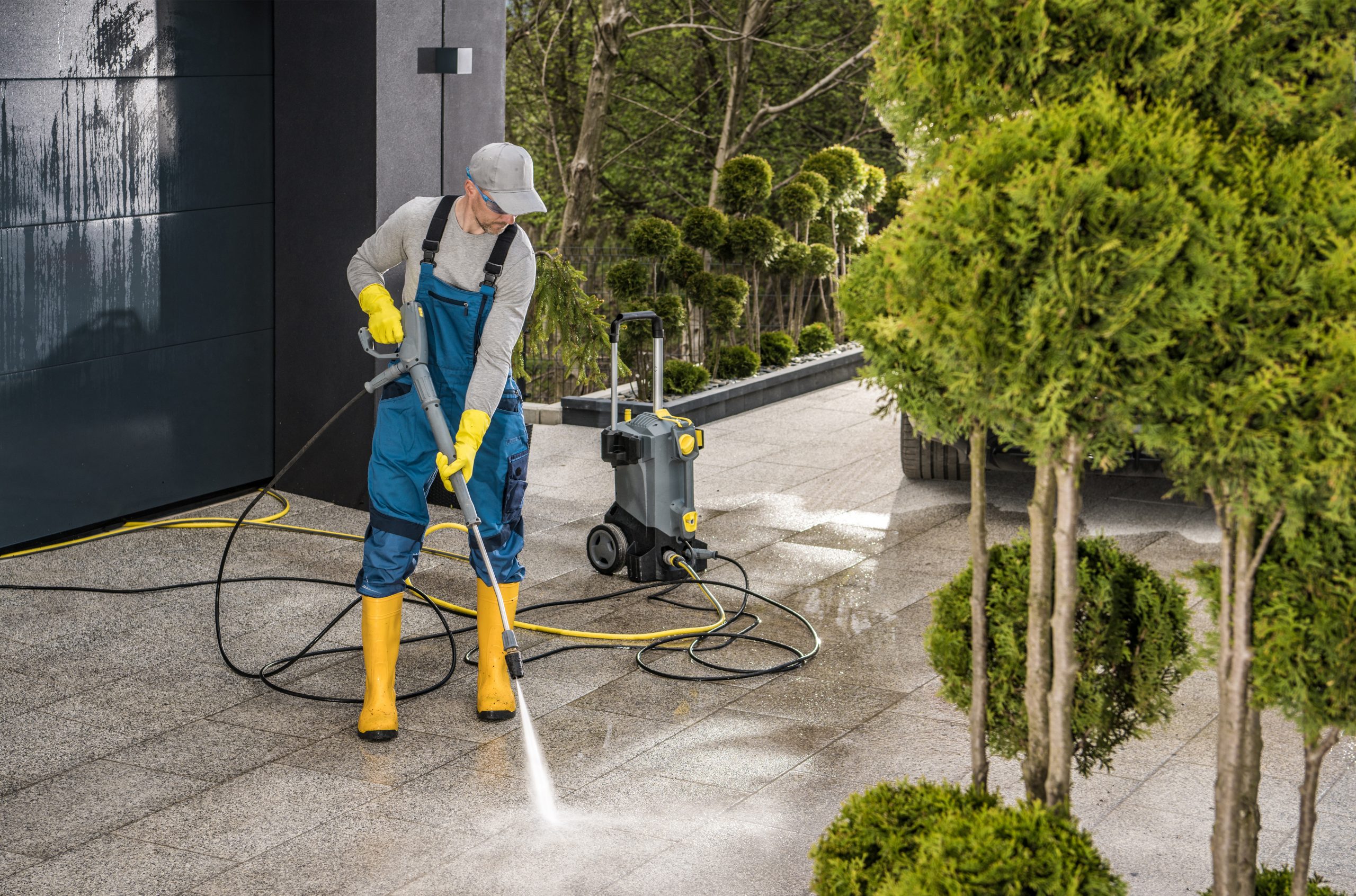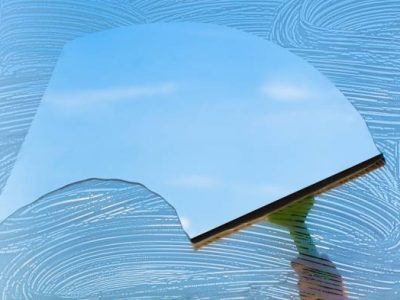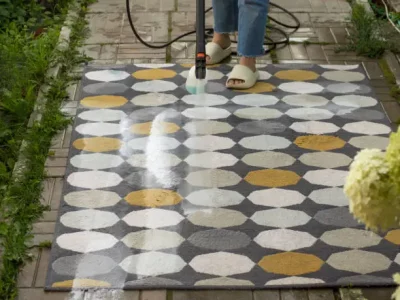Power washing uses pressurized water to remove grime, mold, and dirt from outdoor surfaces. When done correctly, it can restore your home’s appearance and prevent buildup damage. However, if you don’t know how to use them, you may make some mistakes that may damage surfaces.

Caucasian Men Cleaning His Modern House Surroundings with a Powerful Pressure Washer. Washing Brick Made Driveway.
Luckily, this guide provides tips and common mistakes to avoid when power washing your home’s exterior. Read on:
1. Disregarding Safety Measures
Power washing brings risks that require attentive caution. The high-pressure water can inflict serious harm if you don’t take proper precautions. For example, the spray can damage eyes and cause blindness if unshielded by goggles. Likewise, powerful blasts on bare skin may lead to painful abrasions or injection injuries. Therefore, wearing sealed eyewear and gloves as protective gear is essential.
Additionally, falls from ladders represent another prevalent power-washing hazard. Attempting to clean high exterior surfaces often necessitates ladder use. However, positioning ladders sloppily on uneven ground can cause them to topple over, leading to fractures, head trauma, or other serious harm. Prevent accidents by carefully securing ladders and maintaining three points of contact when climbing.
Also, keep electrical cords neatly arranged and utilize ground-fault circuit interrupter outlets to avoid tripping, electrocution, or fire hazards. If unsure what to do, consider hiring experts, such as Soft Works Power Washing services, to take the hustle off your hands. They understand safety protocols and offer top-notch cleaning results.
2. Using Too Much Pressure
When power washing, it’s easy to get carried away and use excessive pressure to perfect the results. However, this aggressive approach can backfire when dealing with materials such as wood, vinyl siding, and brickwork—they’re susceptible to damage from excessive pressure.
For instance, blasting wood siding at close range can splinter the boards while fading or cracking paint. Similarly, the force can distort vinyl siding, warp the panels, and dislodge them from the structure. Brick and stone seem sturdy, but mortar joints and grout lines allow moisture penetration when you power wash them aggressively.
Instead of attempting to purge grime rapidly with intense pressure, use care and restraint. Begin with a wider nozzle, greater distance, and lower setting, then gradually increase as needed. Test inconspicuous areas first before tackling visible surfaces. Making several light passes thoroughly cleans without damaging surfaces.
3. Neglecting Proper Preparation
Pressure washing works best when you prepare the area properly beforehand. Rushing into cleaning without taking preparatory steps may result in damage. For example, unprotected patio furniture, yard decor, and delicate vegetation are vulnerable to damage from the high-pressure spray.
The forceful water can fracture ceramic pots, warp resin wicker, or shred fragile blossom if you don’t shield them. Likewise, open windows and doors allow spray or runoff to infiltrate the home’s interior.
Start by removing small furnishings and items that could blow around. Then, cover larger objects with tarps or plastic sheeting secured tightly. Use breathable material for wrapping plants and trees to prevent leaf scorching.
Also, check for openings around windows and doors and seal or weather strip them to fortify against water intrusion. The effort taken to protect belongings and structures saves time, money, and hassle down the road.
4. Overlooking Suitable Cleaning Solutions
While the high-pressure water does the heavy lifting in power washing, some stains and grime buildups require cleaning agents for satisfactory results. Relying solely on water often leaves surfaces lackluster.
For instance, mold, mildew, and mud may remain clinging after blasting with water alone. Grease deposits also persist without degreasing solutions. However, careless use of caustic or off-label chemicals leads to exterior damage. So, ensure you use suitable detergents and cleaners.
When tackling problematic dirt, select cleaning products specifically formulated for power washing. Seek eco-friendly, biodegradable options safe for plants and pets when cleaning driveways or landscaping.
Consider researching suitable cleaners for eliminating paint or wood stains to avoid harming the underlying surface. Also, check siding or brick manufacturers’ guidelines regarding chemical compatibility to find detergents perfect for your exterior.
5. Attempting To Clean Fragile Surfaces
Power washing requires judiciously distinguishing between durable and delicate surfaces. Pressurized spray excels at removing grime from sturdy materials like concrete but may damage fragile exterior surfaces.
For example, aged wooden shingles and planks can fracture and fragment when high-pressure water seeps into cracks and openings in the grain—likewise, the shearing force of high-pressure undercutting damages soft materials like stucco or limestone. The water can gouge chunks out, leaving pits and cavities behind.
Before power washing any surface, take time to inspect its condition and research its properties—consulting experts about surfaces in poor conditions is essential. Explore less abrasive cleaning techniques for weathered or delicate outer surfaces.
6. Power-Washing Mold Prone Surfaces
Areas prone to mold growth, like siding under roof overhangs, patios, and decking, need special care when power washing. It’s tempting to blast away at mold, but this can drive mold spores into the material, only to regrow quickly.
Instead, pretreat the area with a mold-killing detergent, letting it soak in for 10-15 minutes first. Then, use a fan nozzle at an indirect angle to gently wash away the grime and dead spores. Mold often leaves stains even when removed, so avoid etching these stains deeper with excessive high-pressure sprays.
Porous surfaces like wooden decking likely have mold growing below the surface, so a thorough pre-treatment is crucial before a delicate power wash rinse. Take time and use moderate pressures to avoid worsening the mold problem for persistent growth areas.
Conclusion
Power washing your home’s exterior can significantly improve its appearance and longevity, but it’s essential to approach the task with care. Avoiding the mistakes discussed ensures a successful cleaning project that enhances your home’s curb appeal without causing damage. Remember to prioritize safety and consider the specific needs of your home and its surroundings. Proper planning and technique make power washing a secure, helpful method for preserving your home’s exterior.




















